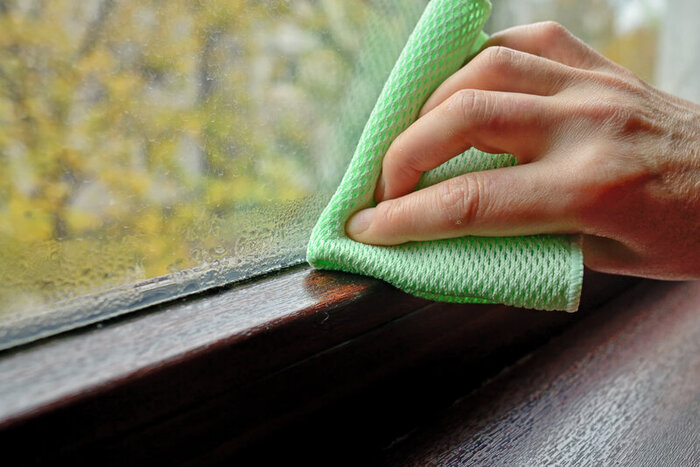
There are several red flags indicating issues in the attic. Some of the most well-known are unusual rises in heating/cooling costs or excessive cycling of the HVAC system. Condensation in the attic is another sign that something is out of balance and needs to be repaired or replaced.
If you notice condensation on attic windows, nails, or exposed metal, it’s time to schedule an attic inspection and correct the issues.
Attic condensation occurs when warm conditioned air comes in contact with cooler air (or surfaces), and moisture droplets form on the hard surfaces. You experience this when you exhale on a cool mirror or window or when you put cold sunglasses stored in your car on your warm face. High humidity levels also cause condensation when moisture-rich humid air hits cooler surfaces, and the water vapor converts into its liquid form.
Regardless of how the condensation forms, condensation in a home is never a good thing. It is a sign that there are issues with the home’s thermal envelope.
Addressing some of the most common reasons for condensation forming in attic and interior home spaces immediately remedies the situation. This includes:
If your insulation is old, damaged, or poorly installed, it’s allowing conditioned air into unconditioned spaces. Eventually, this leads to condensation and inconsistent temperatures around the home. By scheduling an inspection with a licensed insulation contractor, you’ll know whether insulation is sufficient or not. If not, replacing insulation improves attic - and whole home - conditions instantly.
If there are air leaks, cold or warm air collides in the attic, depending on the season. In the warm months, moisture-laden warm air condenses on hard surfaces. During the cold months, hot air meets the cold roof or metal components, resulting in more condensation.
Replacing damaged weather stripping and reinforcing seals around exterior penetrations helps mitigate attic condensation. You can perform DIY air sealing with a minimal investment. Or, if you’re not the handy type, hire an attic solutions specialist to do it for you.
The right balance of insulation, air sealing, and ventilation is key to a healthy attic space. Depending on the location of your home, its orientation on the lot, and the design of the roof, there are a variety of ventilation options that all work together to balance airflow and humidity through and around your attic and roof.
If you need to replace insulation or update your roof, the odds are ventilation is sufficient. If it’s been a while since either of those has happened, it’s time to have an expert inspect your attic and let you know if current ventilation sources are doing their job.
Condensation is also more likely to occur if your roof leaks or the deck has broken down over the years. Unless you have a metal roof, most roofs require replacement about once every twenty years or so - more than that if they aren’t properly maintained.
Some of the most common signs of moisture in the attic are:
There are several reasons homeowners want to maintain moisture-free attics. When an attic has moisture issues:
Whole home energy efficiency is the goal of any roof-attic system. Moisture control problems inherently create unnecessary fluctuations in temperatures and humidity. This results in HVAC systems working harder - and more often - to regulate interior comfort. Excess energy spent to heat and cool a home means reduced energy efficiency.
All that extra energy used to boost HVAC function automatically translates to higher energy spending. Heating and cooling counts for nearly 50% of our utility bills. So, any inefficiencies in the system can amount to spending hundreds or even thousands of extra dollars every year.
Similarly, more wear and tear on the HVAC system automatically results in more money spent repairing the HVAC and leads to extra money spent on more frequent system replacement.
Condensation is usually caused by a combination of factors (more on that below). As a result of poor air circulation and increased humidity, indoor air quality suffers. This is especially true if your home develops mold and mildew infestations, which release spores that can cause respiratory issues for occupants.
Mold and mildew thrive in warm, moist environments. If your attic has condensation in the winter, it provides the perfect backdrop for mold and mildew spores to bloom once things warm up in spring and summer. Eliminating the risk of condensation and other moisture issues makes it a less inviting habitat for mold and mildew.
Are you having a hard time staying warm this winter? Or, have you noticed some of the key signs associated with condensation or moisture in the attic? Contact the pros at Attic Solutions. We’ll do an inspection of your attic and let you know what we find.
We provide experienced, professional, and competitively-priced attic solutions that eliminate attic condensation. Give us a call at 510-500-5007 to schedule your appointment.